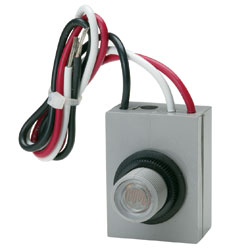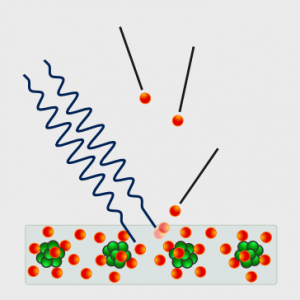And How Do Photocells Help Save You Money In Landscape Lighting

FPC-160 Photocell Switch from Vista Pro
One of the most important parts of landscape lighting is the question of powering it. You need to power it somehow, but you also have to balance cost and efficiency. The most effective way to make sure you’re not wasting power is manual control, but that puts a lot of work on your part. It’s also very easy to forget to manage it, even if it’s a daily thing. Forget to turn it on and you don’t gain the benefit. Forget to turn it off and you waste money and electricity powering it when you don’t need to.
Automation is a good way to balance it and for that, a lot of our landscape lighting takes advantage of photocell switches. But what is a photocell?
Photocells for Automation
A photocell switch is an automated control mechanism for controlling when your lights turn on and off. The receptor in the photocell detects light and determines when to turn the lights on based on the light it detects. You might have seen the same type of switch in your bedroom or bathroom night light. When the main lights go off, the switch turns on. When the lights come on, the switch turns off. That’s because of the photocell receptor in the night light.
How Does A Photocell Work?

Diagram by Ponor
Photocells work on a principle called the photoelectric effect. There are a lot of different parts to this effect, but at the basic level, when electromagnetic radiation (like light) hits a substance, it gives off electrons. Because light is a form of energy, light hitting a conductor can create an electrical charge. Photocells work by managing electrical resistance tied to the photoelectric effect. The photocell uses electrical resistance in response to the current generated by light to trigger a switch, turning the device on or off based on how much light it’s detecting.
Photocells in Landscape Lighting
Photocells are an excellent tool for automating dusk-to-dawn lights. When the photocell detects a change in light levels, it flips the switch. While the sun is shining, it keeps the switch off so that power doesn’t go to the lights. When the sun goes down, it flips the switch on, letting your lights get power. This means that lights meant to be on all night automatically come on at sundown and automatically turn off at sunrise. This eliminates the need to manually turn your lights on and off. It saves you power without needing to do any additional work on your part.
Are There Other Options?
Yes, there are other options besides this one. There are automated timers that run on mechanical processes, for example. While plugged into a power source, these devices track time by mechanical processes used in clocks, flipping the switch at the time you set. While they do work, they have some drawbacks. For example, the timer requires power to function, so if your power goes out, you will have to manually set the time back to its proper time, just as if you were resetting a clock. They also don’t factor in the changes in light levels from seasons, so you will have to manually adjust the time the switch goes off every season to optimize your power use.
There are digital times that do the same function, but through computer processing instead of mechanical processes. Such devices can even be connected to your home network to allow you to control the lights through your phone. These devices can connect to the internet to manage an automatic change-over of seasons, but they still adhere to a rigid schedule. That means they won’t conform to the light levels exactly.
Why we Stick With Photocells
 While timers work, they require a lot of extra work that photocell receptors render needless. Digital timers reduce a lot of the extra work, but they’re still, on the whole, less effective than our reliable standby. We stick with photocells in our landscape lighting because they are the most efficient method that requires the least amount of work for our customers. It may not be as fancy, but sometimes you have to remember not to fix something that isn’t broken.
While timers work, they require a lot of extra work that photocell receptors render needless. Digital timers reduce a lot of the extra work, but they’re still, on the whole, less effective than our reliable standby. We stick with photocells in our landscape lighting because they are the most efficient method that requires the least amount of work for our customers. It may not be as fancy, but sometimes you have to remember not to fix something that isn’t broken.
Now Is The Best Time
If you’ve been looking to get some landscape lighting installed, now’s the perfect time. With fall season coming in, we have time to get the lighting installed before winter. You’ll get a chance to really enjoy your landscape lighting before it starts to get too cold. Portland Sprinklers and Landscape Lighting is ready to help you. Get in touch with us (link to contact) and schedule an appointment today!
